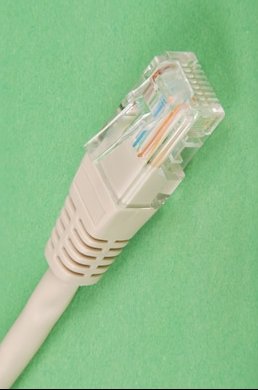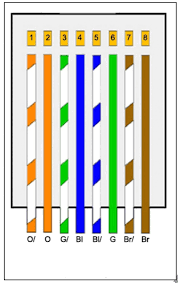Everyone knows what Fast Ethernet is. Don't you?
Fast Ethernet is an extension of the 10 megabit Ethernet standard. It runs on twisted pair or optical fiber cable in a star wired bus topology, similar to the IEEE standard 802.3i called 10BASE-T, itself an evolution of 10BASE5 (802.3) and 10BASE2 (802.3a). Fast Ethernet devices are generally backward compatible with existing 10BASE-T systems, enabling plug-and-play upgrades from 10BASE-T. Most switches and other networking devices with ports capable of Fast Ethernet can perform autonegotiation, sensing a piece of 10BASE-T equipment and setting the port to 10BASE-T half duplex if the 10BASE-T equipment cannot perform auto negotiation itself. The standard specifies the use of CSMA/CD for media access control. A full-duplex mode is also specified and in practice all modern networks use Ethernet switches and operate in full-duplex mode, even as legacy devices that use half duplex still exist.
100BASE-T is any of several Fast Ethernet standards for twisted pair cables, including: 100BASE-TX (100 Mbit/s over two-pair Cat5 or better cable), 100BASE-T4 (100 Mbit/s over four-pair Cat3 or better cable, defunct), 100BASE-T2 (100 Mbit/s over two-pair Cat3 or better cable, also defunct). The segment length for a 100BASE-T cable is limited to 100 metres (328 ft) (the same limit as 10BASE-T and gigabit Ethernet). All are or were standards under IEEE 802.3 (approved 1995). Almost all 100BASE-T installations are 100BASE-TX.
100BASE-TX is the predominant form of Fast Ethernet, and runs over two wire-pairs inside a category 5 or above cable. Each network segment can have a maximum cabling distance of 100 metres (328 ft). One pair is used for each direction, providing full-duplex operation with 100 Mbit/s of throughput in each direction.
Like 10BASE-T, the active pairs in a standard connection are terminated on pins 1, 2, 3 and 6. Since a typical category 5 cable contains 4 pairs, it can support two 100BASE-TX links with a wiring adaptor. Cabling is conventional wired to TIA/EIA-568-B's termination standards, T568A or T568B. This places the active pairs on the orange and green pairs (canonical second and third pairs).
The configuration of 100BASE-TX networks is very similar to 10BASE-T. When used to build a local area network, the devices on the network (computers, printers etc.) are typically connected to a hub or switch, creating a star network. Alternatively it is possible to connect two devices directly using a crossover cable. With today's equipment, crossover cables are generally not needed as most equipment supports auto-negotiation along with auto MDI-X to select and match speed, duplex and pairing.
With 100BASE-TX hardware, the raw bits, presented 4 bits wide clocked at 25 MHz at the MII, go through 4B5B binary encoding to generate a series of 0 and 1 symbols clocked at a 125 MHz symbol rate. The 4B5B encoding provides DC equalization and spectrum shaping. Just as in the 100BASE-FX case, the bits are then transferred to the physical medium attachment layer using NRZI encoding. However, 100BASE-TX introduces an additional, medium dependent sublayer, which employs MLT-3 as a final encoding of the data stream before transmission, resulting in a maximum fundamental frequency of 31.25 MHz. The procedure is borrowed from the ANSI X3.263 FDDI specifications, with minor changes.

